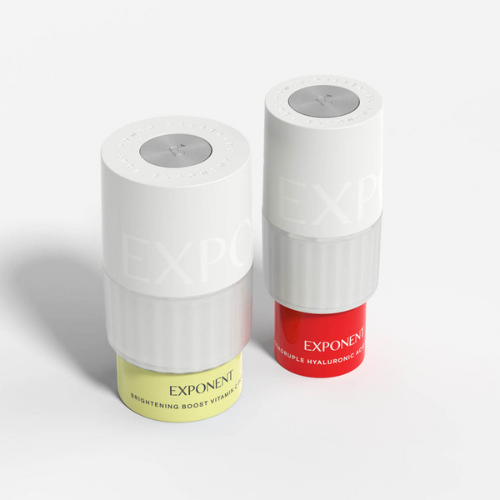Sometimes, the Packaging is the Product

Our editors independently select the products we recommend. We may earn a commission on items bought through our links.
The industrial design nerds at Tomorrow Lab like a versatile product. On their webshow, the nerds try to spin up new, more flexible iterations of popular products. The team builds a stroller that creates enough energy to charge a cell phone. The team creates an ice cream cone cooler that prolongs the life of a drumstick.
Today's Top Deals
It can seem silly, but it isn’t. Tomorrow Lab works with companies that want to offer something their competition cannot. Sometimes that’s a VR astronaut helmet. Sometimes that’s a wireless plumbing monitor that senses leaks. And sometimes that’s packaging. Actually, a lot of times its packaging, which has become – more and more in the age of TikTok – a way for brands to differentiate.
“There are cases where packaging is an afterthought, that’s true of a lot of products,” Jesse Klein, a 29-year-old industrial designer at Tomorrow Lab, tells SPY. “You have to consider where something’s going to live: a lot of it’s on a shelf, but a lot of stuff is direct-to-consumer. And if you’re shipping something, you have to consider packaging… but the unboxing has to be nice.”
Tomorrow Lab’s office in Greenpoint, Brooklyn overlooking the East River is littered with elaborate, Frankensteinian prototypes (the aforementioned astronaut helmet, an electronic dog made out of cardboard and circuit boards, an inline skate with an electronic brake), but the future of packaging innovation is embodied by something less flashy: a vial the size of a ring box, stowed away in Klein’s drawer. It’s a deceptively simple object that Klein designed for Exponent, a skincare company that sells Vitamin C and retinol serums. The packaging is actually the whole pitch for Exponent because skincare products typically lose effectiveness over time and the Tomorrow Lab-design container prevents that by combining the liquid and powder elements of the product only as it is dispensed1 . Clever.

Exponent Brightening Boost Vitamin C Power Serum
Buy Now
Exponent’s packaging is designed to preserve the potency as much as possible.
“To achieve this, we used a singular drive direction with a pin construction and ratchet gear connected to the drive arm. When released, the cap springs back to its original position, leaving the dispenser and mixer in place,” says Klein. “There are cases where packaging is icing on the cake, it’s an add on, but I think it’s different where it can be integrated with the product itself,” he says.
Exponent is relatively new to the market, but its novel packaging makes the brand competitive – and importantly, competitive at its price point. The company probably won’t win over CeraVe or The Ordinary customers, who can get a Vitamin C serum for around $20. Exponent’s slim container (30 doses, the website says, without specifying the number of fluid ounces) costs $98, a pretty penny but on par with Drunk Elephant’s serum ($77) and Kiehl’s ($100). It’s significantly cheaper than a fluid ounce bottle from popular brand SkinCeuticals ($182), which might be an incentive for SkinCeutical loyalists to switch over.
Other Tomorrow Lab projects suggest possibilities for the future of other industries, where a leg-up through packaging is less straightforward.
In 2021, the lab designed a product called “Dub,”a custom-designed glass bottle with an integrated bluetooth speaker. The catch: you can’t really hear the music until the bottle is placed on the bar. It’s pricier to make than a regular $14.99 bottle of Bacardi, so the Dub isn’t necessarily something that steals frat-aged customers in the market for $15 rum. But maybe it seems like a fun party trick for someone in the market for a $30 rum, willing to downgrade from Mount Gay to Bacardi for the novelty of drinking from a bottle that actually plays “Drinking from the Bottle.”
Lately, though, the emphasis has been on sustainability. Consumers are pushing back on wasteful brands. A recent Harvard Business Review study found that sustainability is moving from a “nice-to-have” feature for consumers in the brands they buy to a must-have. “Everyone making products these days knows you have to be telling a sustainability story,” Klein says. “I think the best products are kind of like Exponent, where they’re not just considering the individual materials but they’re considering the full life cycle of the product.” The ideal version of that life cycle involves companies being involved in the disposal and recycling of their products, he says, which is, of course, more expensive.
Exponent still uses some plastic, but Klein is focused on “what parts of the product are disposable, reusable, or refillable,” to maximize impact.
A few months ago, Klein bought a pair of earbuds. The package was made entirely from paper pulp molded into a hard shell. It was elegant, elevated, and sustainable. He was annoyed. Why hadn’t he thought of that first?
1 A cosmetics soda fountain.
More Top Deals from SPY
Best of SPY
